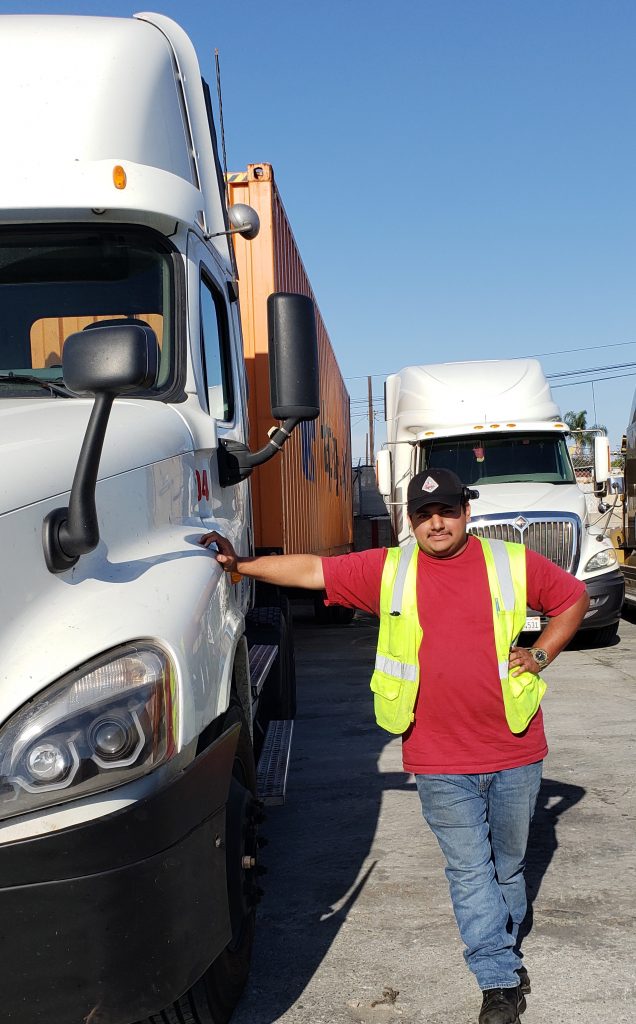Keratoconus Journey: Aaron

An Unexpected Turn
Aaron was an active teen growing up. He participated in many sports despite wearing thick glasses to see clearly. As a high school varsity football player, Aaron’s teammates often teased him for his poor vision– specifically his troubles locating the ball on the field. Despite his love of football, his eyesight often caused problems– during one game he remembers lunging for a pass that was nowhere near him.
Aaron’s vision troubles continued after graduating high school, when he suffered an unexpected and painful corneal rupture in his right eye. During his treatment, doctors determined the root cause of his vision problems: Aaron was living with an eye disease called keratoconus– a progressive condition that causes thinning and bulging of the cornea.
At age 18, Aaron received a corneal transplant to replace the damaged tissue in his right eye. His recovery from the transplant was slower than he expected. It took about a month for the pain to subside and even longer for his vision to completely “clear.”
After the procedure, Aaron received upsetting news that he also had keratoconus in his left eye. Thankfully the disease was less severe than his right eye, so he could begin researching ways to manage his condition and potentially avoid another corneal transplant. To manage his keratoconus, Aaron had to wear a scleral contact lens in his right eye and a rigid gas permeable lens in his left eye in addition to his glasses. If left untreated, keratoconus can quickly progress and in some cases, cause blindness. According to Aaron, the prospect of losing his full eyesight left him feeling defeated. “I didn’t know how I would be able to do anything without my vision,” he admitted. “It crushed me.”
Driving On
A few years after his corneal transplant, Aaron began the application process for his truck-driving license. He knew his vision was not as strong as he would like but he couldn’t put his life on hold any longer. As part of the application process, Aaron disclosed to the California Department of Motor Vehicles his vision correcting eyewear. He passed the vision exam and in April of 2017, Aaron received his Class A California driver’s license allowing him to drive semi-trailer trucks.
Aaron’s first year as a truck driver went smoothly. He was able to drive and was excited to get in his truck each morning and spend the day on the road.
Unfortunately, as time went on, the vision in his left (non-transplanted) eye started to decline. He began having trouble judging the distance between cars and seeing whether or not a car was traveling in the lane next to him. Driving at night presented its own unique challenge, specifically when he was trying to back up his rig at the terminal. He started to hold up the line of other truckers coming in behind him and eventually needed a fellow truck driver to park the semi-trailer truck for him.
Facing the prospect of having to give up his new career, Aaron made the difficult decision to take himself off the road and figure out his next move.

At the Crossroads
In late 2017, because of the challenges he was dealing with, Aaron feared he might lose his job and career if he could not find a way to preserve his vision. While corneal transplants can treat keratoconus, he did not want to undergo the taxing surgery again if there were another option. Feeling that his resources were limited, Aaron turned to someone who was also battling keratoconus: his own brother.
Aaron’s brother could empathize with the challenges and fears he was dealing with and suggested visiting a local ophthalmologist in the area. After being examined by the doctor, Aaron learned about a promising and, at the time-new, FDA-approved procedure called corneal cross-linking.
A minimally invasive procedure, corneal cross-linking would strengthen the bonds of Aaron’s cornea, working to halt the progression of the disease. After reading reviews and doing his own research, Aaron decided that cross-linking was the best option for him, both in the short and long term.
In January 2018, he underwent the procedure. The first few days of his recovery were painful, but he managed with pain medication prescribed by his doctor. During his recovery, Aaron had the support of his parents and siblings, and even had his doctor’s personal phone number on hand.
Now, Aaron is back behind the wheel of his semi-trailer truck wearing soft contact lenses and confident in his ability to see the road clearly.
Click here to read more KC Journeys.
The results described on this site are based on data collected regarding short- and intermediate-term efficacy of treatment. Individual results are not guaranteed and may vary.